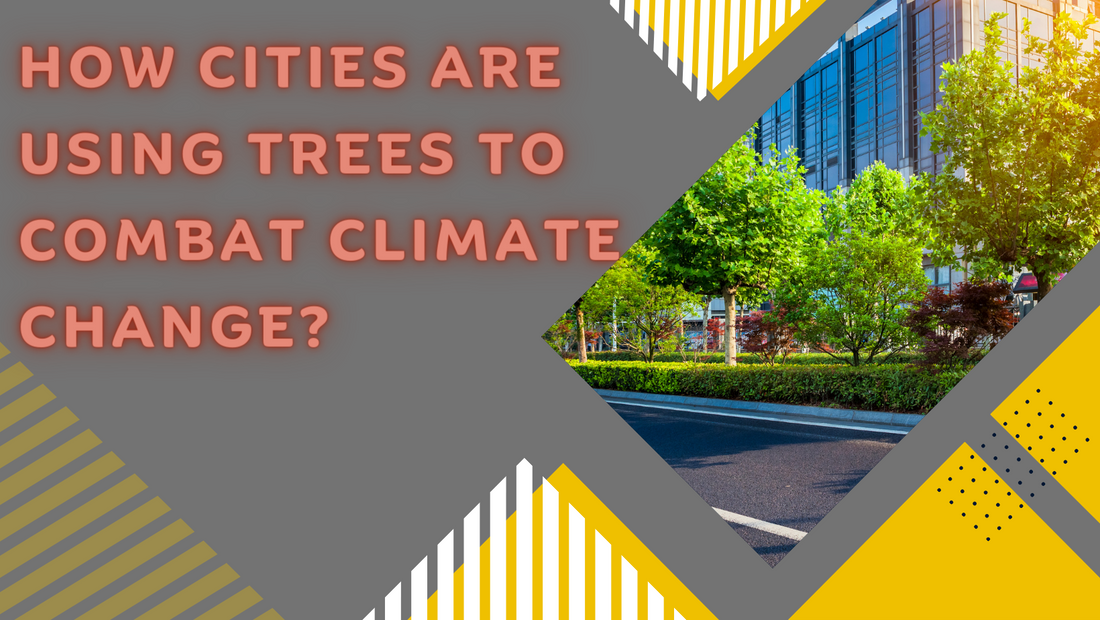
How Cities Are Using Trees to Combat Climate Change?
Share
The Concept of Urban Forests :
How Cities Are Using Trees to Combat Climate Change
In recent years, cities worldwide have increasingly recognized the importance of urban forests in combating climate change and enhancing urban resilience. Urban forests, consisting of trees, parks, and green spaces within urban areas, play a crucial role in mitigating the adverse effects of climate change while providing numerous social, economic, and environmental benefits.
In this article, we explore the significance of urban forests, the innovative approaches cities are adopting to expand green infrastructure, and the potential impact of these efforts on climate change mitigation.
Understanding Urban Forests
Urban forests encompass a diverse range of vegetation, including street trees, parks, community gardens, and natural areas, integrated into the fabric of urban landscapes. These green spaces contribute to the overall health and well-being of city residents while providing essential ecosystem services.
Urban forests help mitigate urban heat island effects by providing shade and cooling the surrounding environment, reducing energy consumption for air conditioning and lowering temperatures in densely populated areas.
The Role of Trees in Climate Change Mitigation
Trees are nature's carbon sinks, absorbing carbon dioxide (CO2) from the atmosphere through photosynthesis and storing it in their biomass. By sequestering carbon, trees help mitigate the greenhouse effect and reduce the concentration of CO2, a major contributor to climate change.
In urban environments, trees play a vital role in carbon sequestration, helping offset greenhouse gas emissions from transportation, buildings, and industrial activities.
Innovative Approaches to Urban Forestry
Cities around the world are implementing innovative approaches to enhance urban forests and maximize their climate change mitigation potential. These strategies include tree planting initiatives, green roof installations, urban reforestation projects, and the preservation of existing green spaces.
By integrating trees into urban planning and design, cities can create more resilient and sustainable environments while improving the quality of life for residents.
Green Infrastructure and Climate Resilience
Green infrastructure, which includes urban forests, parks, wetlands, and green roofs, plays a crucial role in building climate resilience in cities. By absorbing stormwater, reducing flood risk, and enhancing biodiversity, urban forests help cities adapt to the impacts of climate change, such as extreme weather events and rising temperatures.
Additionally, green spaces provide habitat for wildlife, improve air quality, and promote mental and physical well-being among urban residents.
Community Engagement and Empowerment
Community engagement is key to the success of urban forestry initiatives, as it fosters a sense of ownership and stewardship among residents. Cities are increasingly involving local communities in tree planting events, volunteer programs, and educational workshops to raise awareness about the importance of urban forests and encourage active participation in conservation efforts.
By empowering communities to take action, cities can create a sense of pride and responsibility for maintaining green spaces and preserving urban ecosystems.
Case Studies of Successful Urban Forestry Programs
Numerous cities worldwide have implemented successful urban forestry programs that demonstrate the potential of trees in climate change mitigation and urban revitalization.
For example, cities like Melbourne, Australia, have established ambitious tree planting targets and integrated green infrastructure into urban planning policies to enhance resilience to heatwaves and reduce energy consumption.
Similarly, cities such as New York City have invested in green roof installations and street tree maintenance programs to improve air quality and mitigate the urban heat island effect.
Conclusion: Harnessing the Power of Urban Forests
In conclusion, urban forests play a crucial role in combatting climate change and building climate resilience in cities.
By expanding green infrastructure, promoting tree planting initiatives, and engaging local communities, cities can maximize the benefits of urban forests while creating healthier, more sustainable urban environments.
As we continue to grapple with the challenges of climate change, urban forests offer a promising solution for mitigating its impacts and creating greener, more livable cities for future generations.
Let us embrace the power of trees and work together to harness their full potential in the fight against climate change.
Gift One, Plant One Campaign
The Akalmand Gift Store philosophy is on "Gift one, plant one" or "Buy one, plant one" Campaign where We pledge plant trees with every product you buy.
By supporting this campaign and choosing our products, individuals can directly Plant more Trees in their happy moments like Birthday, Anniversary, Work Anniversary, Farewell, Reward & Recognition, Promotion, Celebration, Achievements and many other auspicious moments.
In conclusion, the number of trees a person is liable to plant on earth during their lifetime varies based on individual circumstances. However, everyone can contribute to planting more trees in one way or another, and every tree planted counts towards the global effort to combat climate change and preserve the environment.
Plant Trees, Save Environment, Create Healthy future for your Kids.
Dear Akalmands! Please support Gift One Plant One campaign by The Akalmand Gift.









